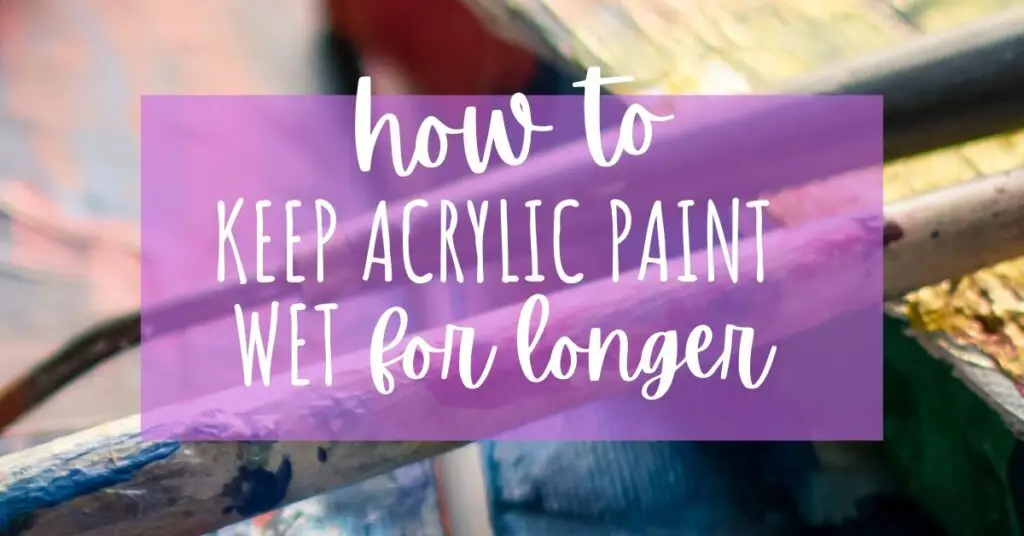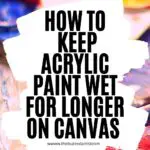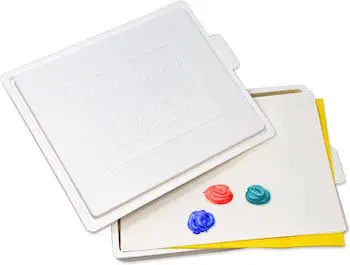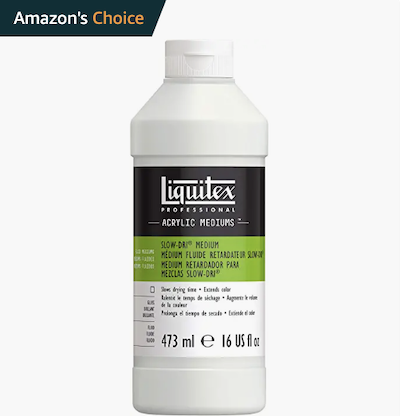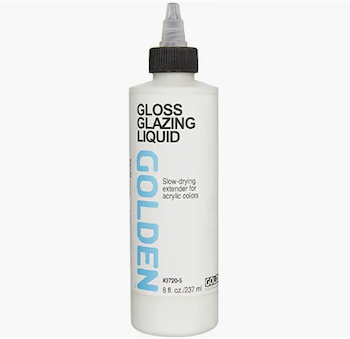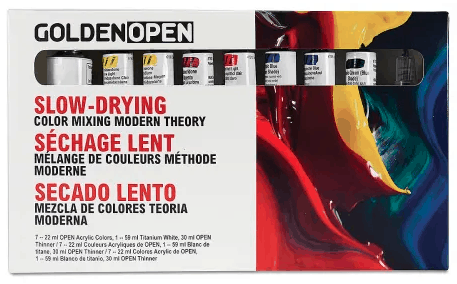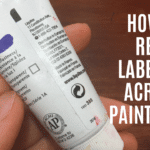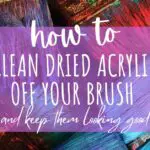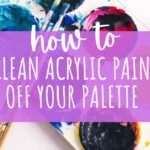Stupid simple ways to keep your acrylic paint from drying too quickly and get better, more magical blends.
So you’re painting your latest masterpiece, dipping your brush tenderly into your acrylic paint. You throw together a bunch of colors onto your palette and after a few careful mixes, you get the perfect color.
But, after ten minutes, you go back to your palette to get more color, but your paint mix has completely dried up!
Accepting defeat, you decide to enhance the blending of your background color only to discover your previous layer has dried giving your new layer nothing to blend with. Argh!!!
So, what can you do to stop the fast drying time for your precious acrylic paint?

In this blog post, we’ll explore the five easy ways to elongate the drying time -aka the open time – for your acrylic paints which include:
- Using a wet palette
- Spraying palette with water
- Adding paint medium
- Spraying the back of your canvas
- Using slow drying paint
Let’s dive further into each of these methods and how they can help keep your acrylic paints wet for longer.
Pin it for later! ⤵
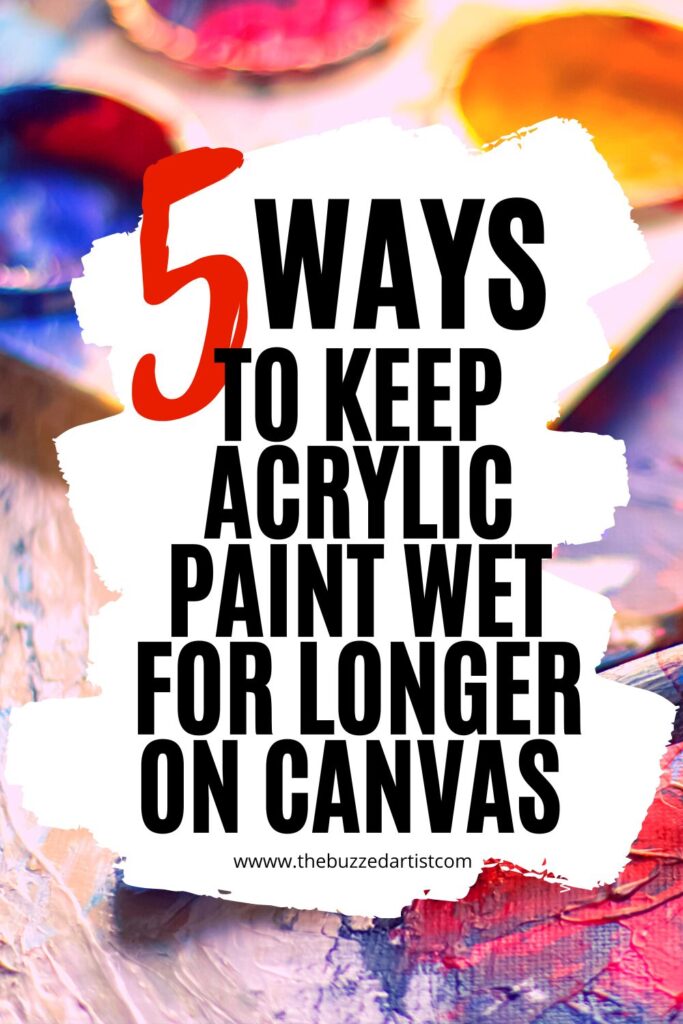
Disclaimer: some links used in this post are affiliate links, which means I’ll earn a small commission if you purchase using my links at no extra cost to you. I only recommend products I think will be helpful to you and bring you one step closer to creating beautiful acrylic masterpieces!
Why would you want to keep acrylic paints wet while painting?
There are several reasons why you might want to extend your acrylic paint drying time, some reasons being….
- Get better blends and backgrounds
- Achieve better color mixing
- Work on painting for longer periods of time without fear of paint drying up
- Harness the blending advantages of oil paint without the huge time investment
Acrylic paint has the special mixing and application qualities of oil paints, but without the long-extended drying times. It used to take oil painters 3-4 days to wait for their paintings to dry in between layers; painters using acrylics need only wait 5-10 minutes between layers.
That’s a HUGE difference… with its advantages and disadvantages.
But, while you aren’t waiting an eternity for your painting to dry, blending colors can become a bit more difficult.
And if you recall from my post about creating smooth blends with your acrylics, blending really only happens when your paint is wet. Otherwise, you’ll basically have to start all over again. And that’s a bit sucky-suck-suck.
So, you’re going to want a teensy bit more control in the “working time” from your acrylics.
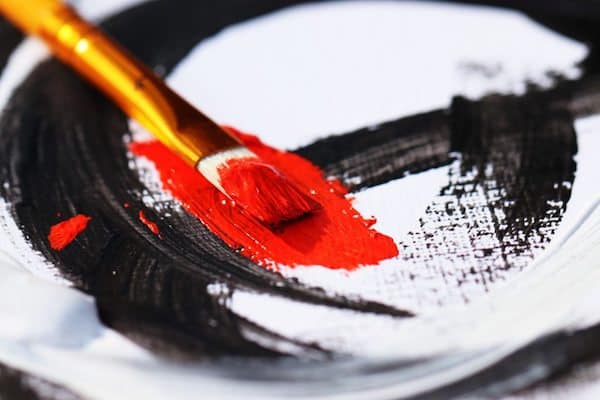
How to Extend the Working Time of Your Acrylics
When it comes to keeping your acrylic paint on canvas wet for longer, there are two schools of thought:
- Keep your palette wet: This approach focuses on keeping acrylic paint in that optimal, wet-working “open” state while it rests on your palette – keeping it as fresh and wet as possible.
- Keep your paint pigment wet: This approach focuses on the blending capabilities of your paint while working on your canvas or support.
I have seen artists use either one or a mix of both approaches to keep their paintings workable for longer. It’s really up to you how many of these tactics you want to utilize. So, let’s dive into each of the various methods artists use to keep their acrylic paint wet for longer.
Use a Stay-Wet Palette
If you have never heard of a stay-wet palette before, it’s basically a tray that contains a damp surface for your acrylic paint to rest on while you work.
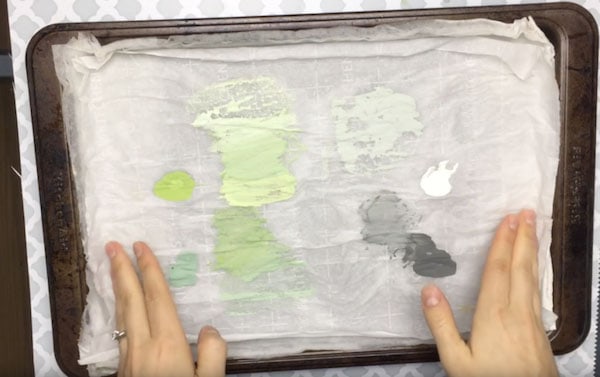
Wet palette trays is one of the best ways to keep your paint wet, mainly due to its nice walled borders – giving artists the ability to add wet paper towel topped with parchment paper or wax paper to help make their acrylic paint stay wet for longer. You can opt for either ceramic or plastic palette trays.
This allows you to work with a palette for several hours to days, stretching your paint glob working time and saving your many headaches of more color mixing. Then, simply use an airtight lid to seal the tray and all its contents.
This means that if you put too much paint on your palette, you don’t need to throw it out because it will still be workable for a very long time.
A popular stay wet palette is the Masterson Sta-Wet Palette – which has a tray and sponge where you can lay your acrylics down and work. And when you’re done with a painting session, it serves as an airtight container with a lid that will seal in the moisture and keep your paint from drying out.
Read more: How to Make your Own DIY Wet Palette
Spray Your Palette with Water
Spraying your palette is a simple yet straight forward method for extending the drying time of acrylic paint.
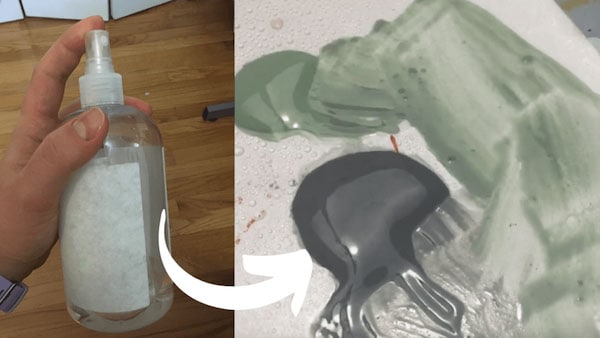
All you need to do this is get a spray bottle with water and simply spray a thin layer of water over your palette (or palette paper) and paint pools every few minutes. This helps keep your paint wet and workable for longer periods of time AND it’s easy to set-up and use!
This method works great with all types of palettes, including palette paper and glass palette. However, using a paper plate and misting water over it might break down the plate integrity. So, I would avoid using paper for this method.

Add Acrylic Mediums to your Paint
Acrylic mediums are not just an effective way to thin out your acrylic paint – it’s also a great way to keep your paint from drying too quickly. Here are a few mediums that are very great for extending the working time of acrylics:
Acrylic Retarder
As the name suggest, paint retarders are a transparent additive you can mix into your paint to extend or retard their drying time. It works by altering the paint film and prevents the water from evaporating out of the paint as quickly.
Once added and mixed, you can proceed to paint as you normally would on your canvas, and you will see that your paint will not dry as quickly, therefore making it hella easier to blend!
But, you’ll want to exercise a bit of caution.
Adding too much retarder can leave your paint feeling tacky and produce a strange texture. Lucky for us, many paint brands, like Liquitex and Golden, sell retarders and provide detailed instructions on how much to mix in so you don’t have to always guess or pray you don’t mess it up again.
Liquitex Slow-Dri Medium is a popular acrylic retarder lots of artists love to use to extend the working time of their acrylic paint.
The general rule of thumb is add no more than 15% retarder to a paint mix – which means you are usually adding very small doses at a time.
As an added bonus, here is a helpful video showing you how you can mix paint retarder in your acrylic paints (plus some non-PC humor if you have the funny bone of a 12-year-old…which I most certainly do):
Acrylic Glazing Liquids and Gels
I recently discovered that acrylic glazing liquids can also be used to stop acrylics from drying too fast instead of acrylic retarders.
Acrylic gel and glazing liquids are usually milky white in appearance and have a slight runny quality to them. Some glazing liquids have slow-drying paint extenders pre-mixed in that can be used to keep your acrylics from drying too quickly and can dilute your paint strokes without compromising canvas coverage (which too much water does with acrylics).
When mixing this in with your paint, you can continually add glazing liquid to further dilute your coverage – making it really awesome for subtle blending edges.
One of the more reputable acrylic glazing liquids that extend your painting time is Golden Glazing Liquid. It helps keep your paint wet for a while longer and is available in gloss and satin finish.
But if you prefer other brands, be sure to read the labels first to see if the glaze contains some form of paint extender or retarder.
Spray Back of Acrylic Canvas with Water
Ok, I know this sounds stupid simple. But, spraying the back of your canvas with water is a very effective method of keeping your acrylics wet for longer as it sits on your canvas.
Very much like the wet palette option, spraying the back of your canvas basically creates a surface that is continuously wet, thereby slowing down the drying time of your working surface.
Using a spray bottle with water, turn your canvas over to the back and add an even misting of water to the canvas. You’ll want to do this every so often (typically every 5-10 minutes) to ensure your canvas stays wet, but isn’t soggy!
Simply feel the back of your canvas to feel how wet it is. If it’s relatively dry, spray some more water. Easy peasy.
Use Slow Drying Acrylic Paint
Slow drying acrylic paint is the best way for getting slower drying times because the retarder medium is already integrated into the paint itself.
The great thing about these is NO additional mixing or ratios you need to worry about. (Thank god)
One of the more popular, well-known of slow-drying acrylic paint is Golden open acrylics, with their Open Slow Drying Acrylic Paint set.
This line of open paints is formulated with a unique set of working properties, helping your wet paint stay wet longer, even in outdoor conditions. This makes your color mixes usable for much longer — resulting in less wasted paint. And the heavy body paint is absolutely delicious with its saturated colors.
Use Interactive Paint
…and to take this one step further, if you are looking for slow-drying paint that you can further manipulate a few hours AFTER a painting session, you may want to consider interactive paint.
One of the best brands that does this is Chroma Atelier, with their Interactive Artists’ Acrylics.
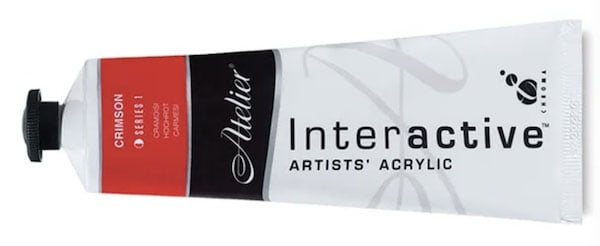
In application, Atelier interactive paints perform like conventional acrylics, allowing for traditional painting and glazing techniques.
Yet this kind of paint can also give you unique control over the drying process — plus the ability to reactivate the paint, even when dry. This is HUH-UUUUGE!
Plus, once you are officially done and happy with your painting, simply set it aside to cure and dry for a few days. Then depending on your intentions with your painting, slap on some protective varnish or sealant to complete your masterpiece.
Final Thoughts on Ways to Keep Acrylic Paint Wet for Longer
Acrylic painting has so much versatility, can be used in a wide range of application, and knowing how to manipulate their drying time can open up a whole new world of mixing possibilities. You can use acrylic mediums like retarders and glazes, utilize a stay wet palette to keep your paint workable, or just buy open acrylics that already have mediums built into the paint.
You can use a combination of all these tips or just one that best suits your needs.
